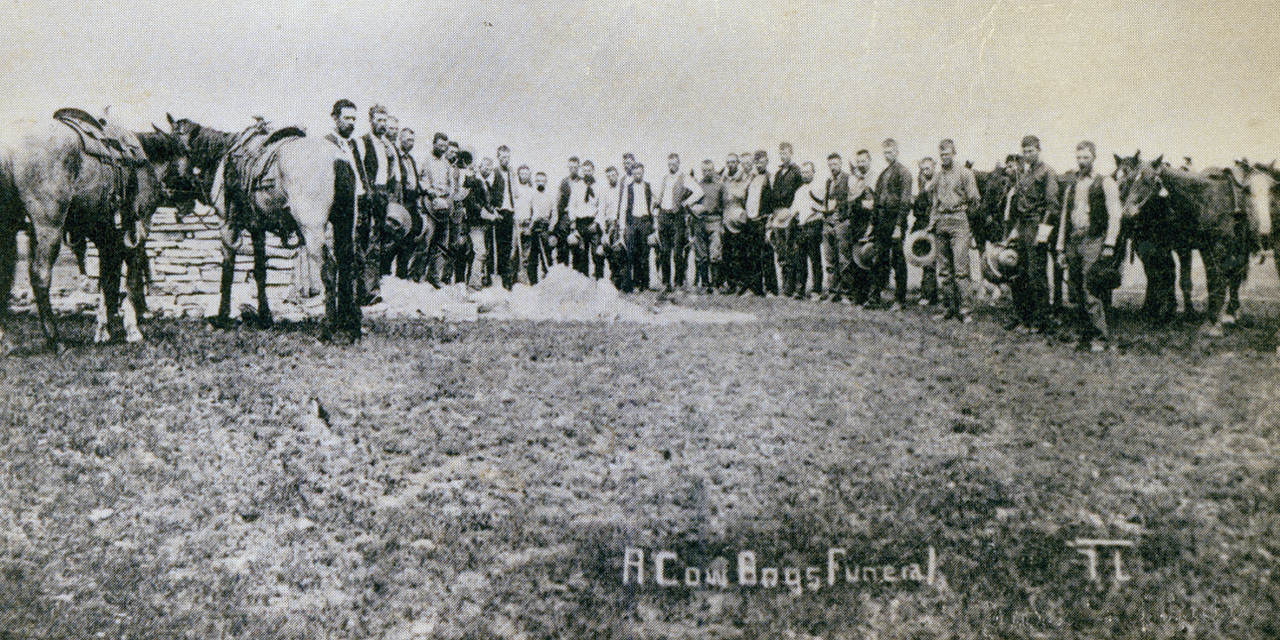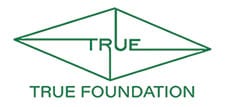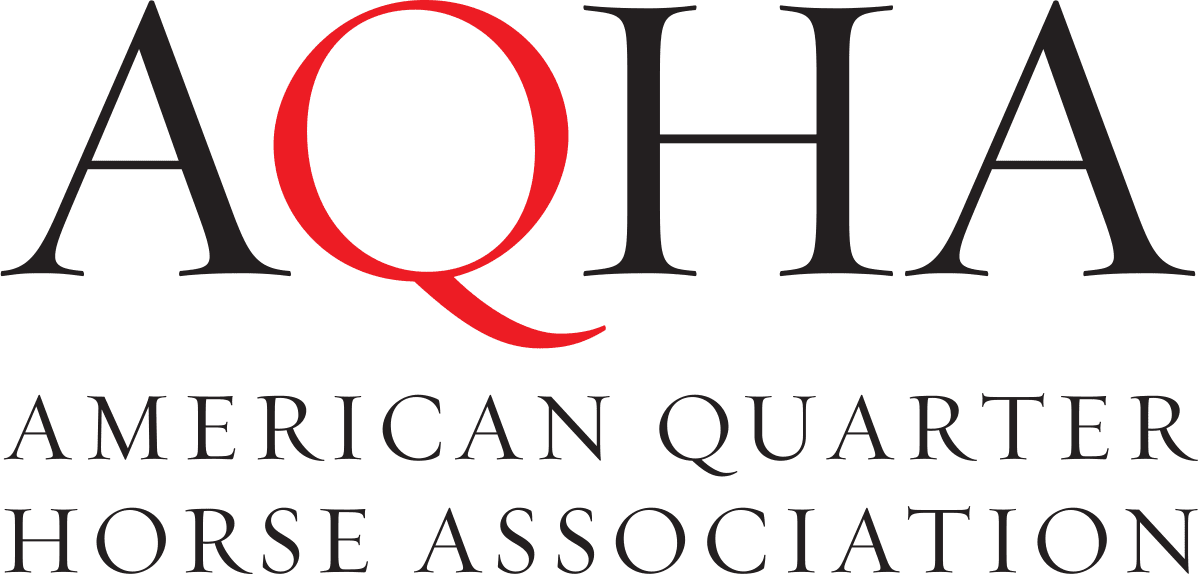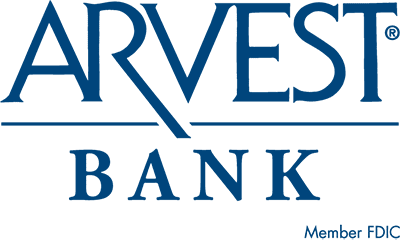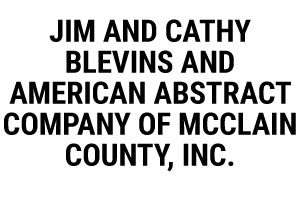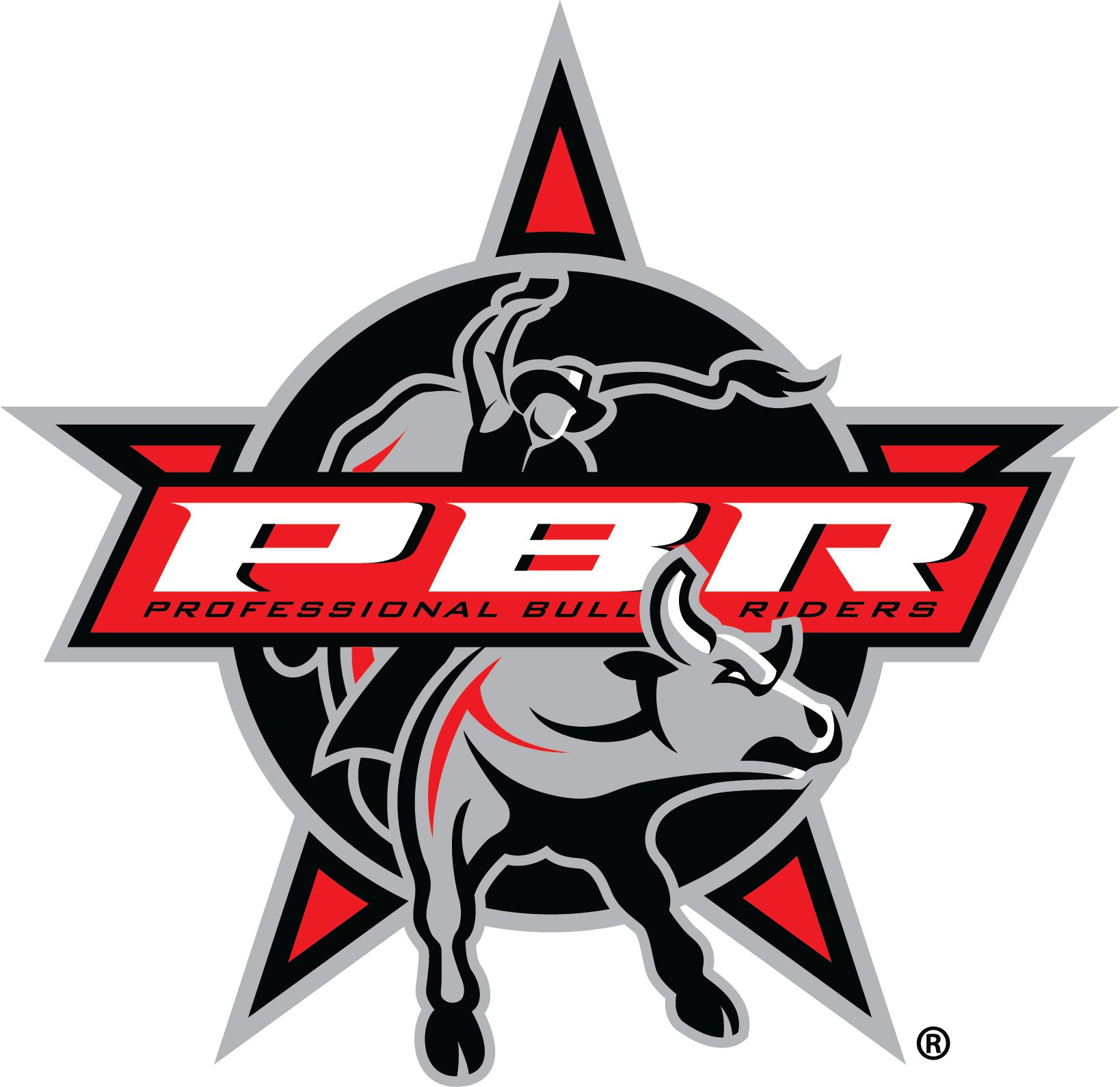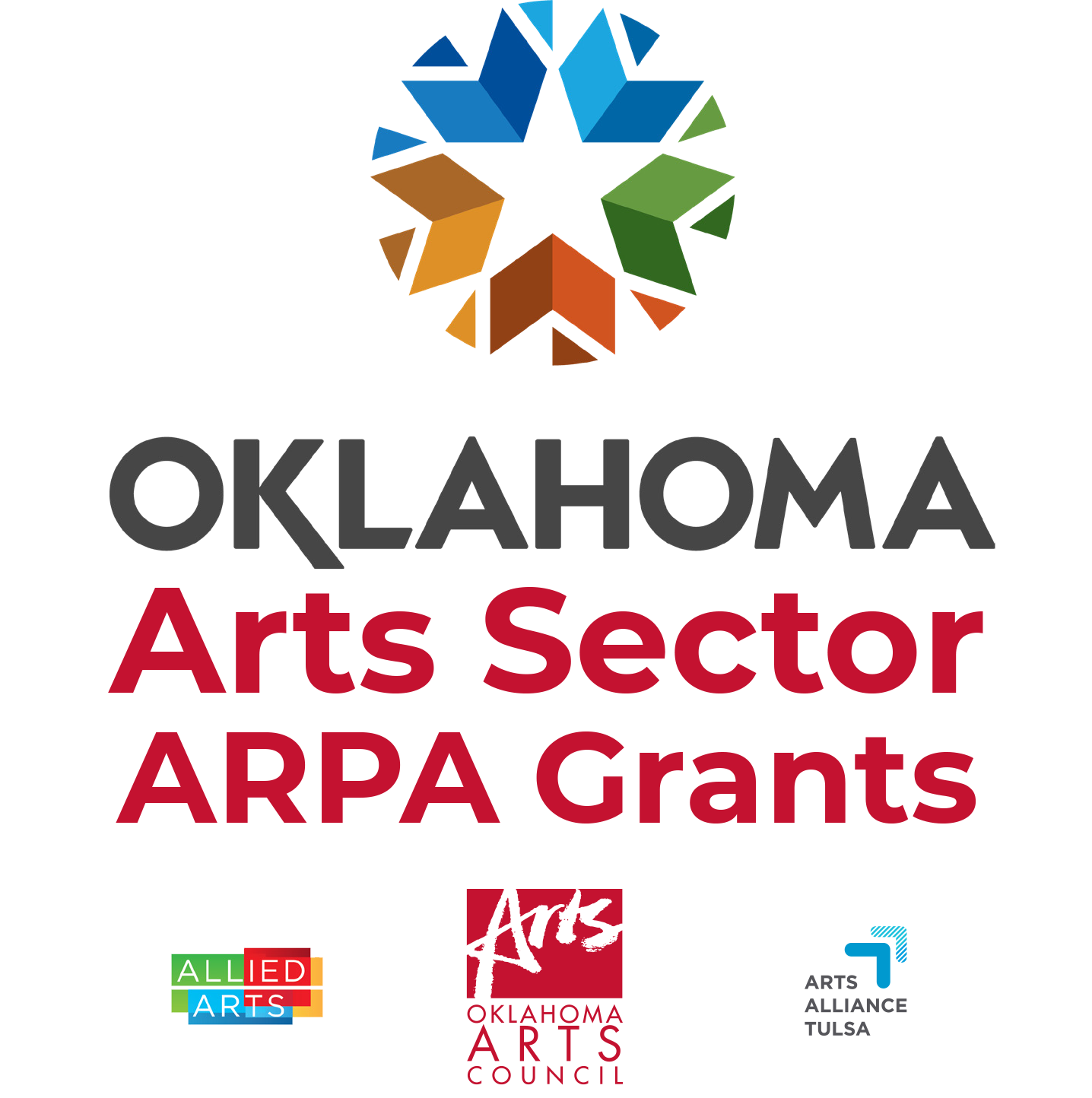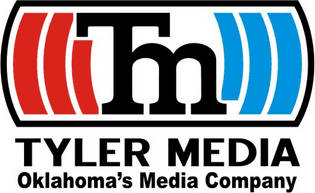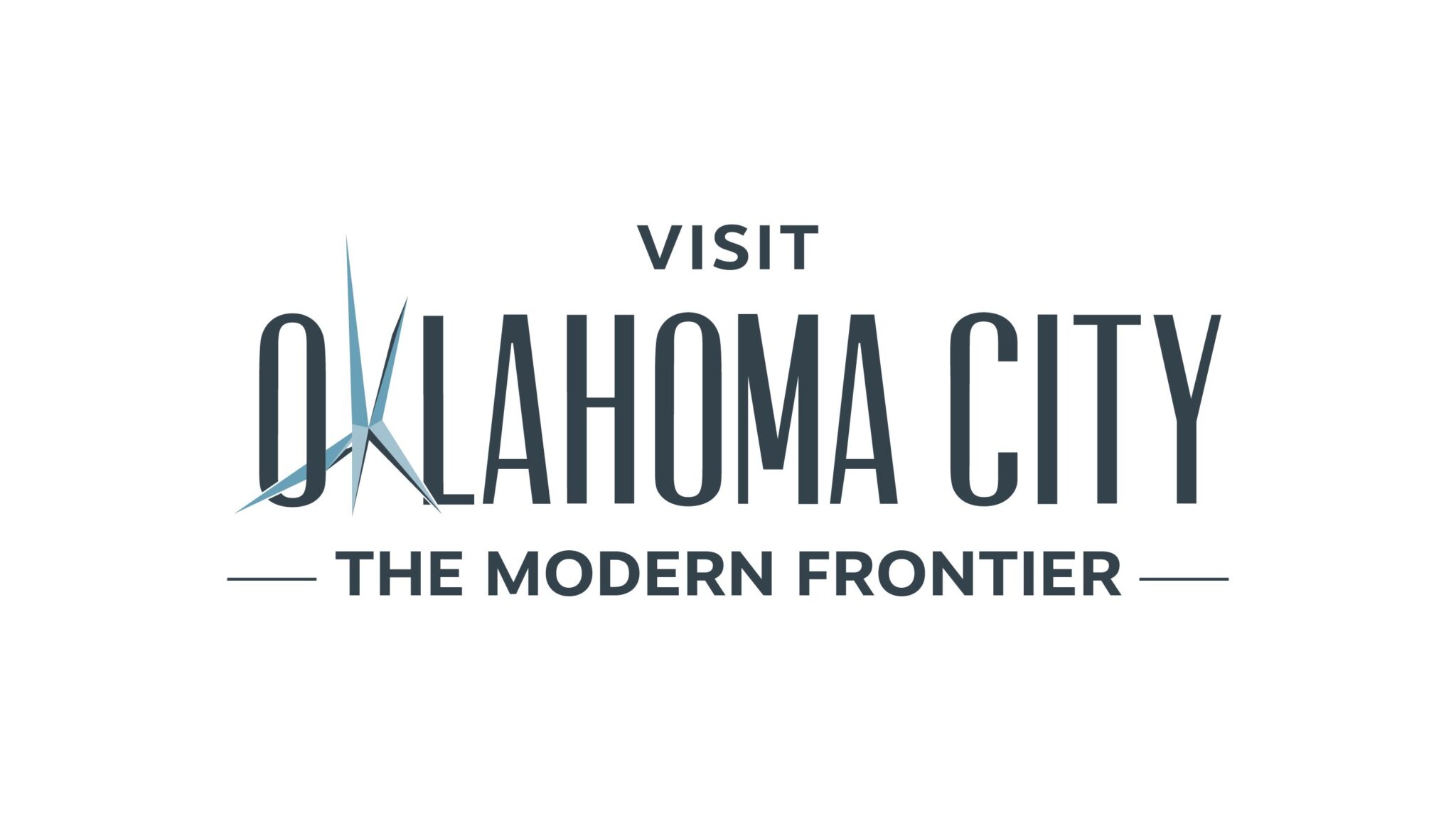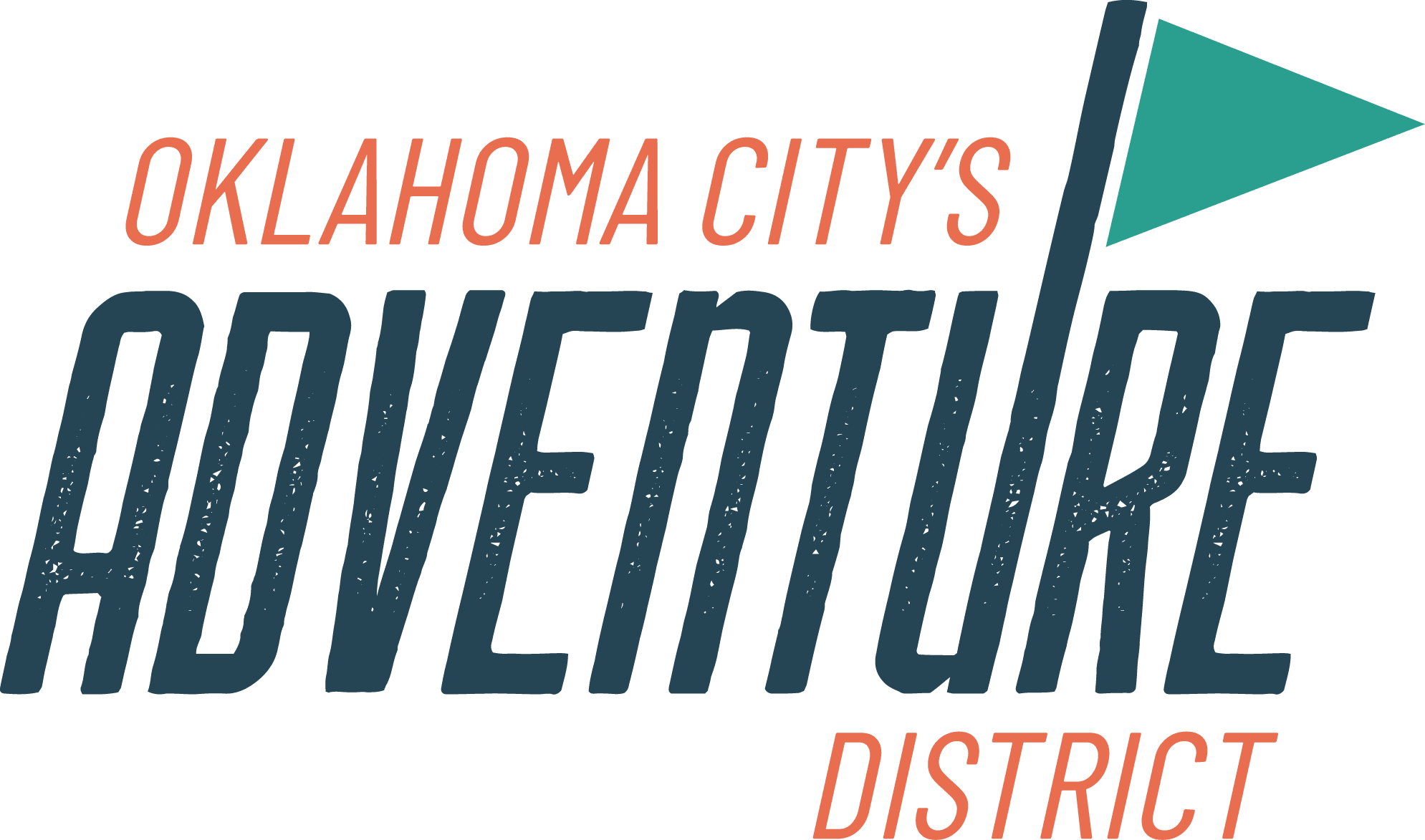A Cowboys Funeral. Photographer unknown, 1891, Baca County, Colorado. Titled A Cowboys Funeral, this image – which is housed in the archives of the National Cowboy & Western Heritage Museum’s Dickinson Research Center – captures the funeral of George Brenton, a young cowboy who died during a roundup in 1891 in Baca County, which is located in the southeast corner of Colorado.
Brenton rode for the JJ Ranch, a sprawling outfit that ranged across much of Baca County. On the day of his death, Brenton and nine other JJ cowboys were working the roundup for the Reynolds Cattle Company with about 20 other cowboys under foreman and wagon boss Walter Dunn. It was said Brenton’s horse stumbled while fording the juncture of East and West Carrizo creeks, falling upon the hapless cowboy. However, some maintained that the young buckaroo, perhaps heartbroken over a love that had gone sour, intentionally drowned his sorrows, and himself, in the Carrizo.
After Brenton’s body was pulled from the water, he was taken to Carrizo Springs Cemetery for burial – behind the two tethered horses on the left side of the photo one can see an existing grave built up with carefully stacked flagstone to deter varmints. At the time of this photo, Brenton had been laid into his hastily dug grave, a few words undoubtedly uttered by Dunn, the range boss (the mustachioed cowboy standing on the far left), and perhaps a few of Brenton’s friends, and a mound of dirt piled atop the grave. After posing with hats off for a solemn moment, it was back to work for these cowboys.
At the time, impromptu funerals such as Brenton’s – out on the open range with ne’er a preacher, woman, or child present – were no doubt a common occurrence throughout the West. What made this image particularly iconic, especially in the region from which it hails, is the fact that an image exists at all. History is enigmatic regarding the reason a photographer was on hand to record a roundup in such hard country in 1891. But the fact a photographer was on hand, we are allowed a fascinating glimpse into a world that, sadly, is gone.
Yet, what makes this occurrence truly unsettling is the fact that, before the funeral and prior to the cowboy’s death, the same photographer captured Brenton as he rode into the Carrizo moments before taking his deadly fall.
Cowboy George Brenton (in background, at right) rides his horse into the Carrizo moments before his horse stumbles and Brenton drowns. Note Reynolds Cattle Company wagon boss Walter Dunn standing in the foreground at left.
In the photo, Brenton can be seen in the background riding his horse through the Carrizo while other cowboys bathe in the water. Reynolds Cattle Company wagon boss Walter Dunn stands at the left facing the camera, nearly identical to the position he would take later that day at Brenton’s funeral.
In the 20th century, a former windmill salesman and Baca County sheriff named Harve Kett wrote down the particulars of Brenton’s death, and identified each cowboy in the funeral photo save for one. Turns out that cowboys representing ranches from Colorado, Kansas, New Mexico, Oklahoma Territory, and Texas were all present in the photo that day. Kett also went so far as to identify, where possible, the place where each cowboy met his demise, unless they were still alive at the time Kett put pen to paper. It’s known that four of the cowboys pictured would go on to meet violent ends during gunfights in Arizona and Colorado.
As mentioned, A Cowboys Funeral became an iconic image, particularly in the area around Baca County. Its portrayal of the cowboy history of the area – and of the Western United States in general – was given a place of honor on the walls of barber shops, bars, restaurants, and ranch houses throughout the region. It even graced the cover of a history book of the region, titled A Place Called Baca, which was written by my great-uncle Ike Osteen. Cowboy George Brenton (in background, at right) rides his horse into the Carrizo moments before his horse stumbles and Brenton drowns. Note Reynolds Cattle Company wagon boss Walter Dunn standing in the foreground at left.
In the photo, Brenton can be seen in the background riding his horse through the Carrizo while other cowboys bathe in the water. Reynolds Cattle Company wagon boss Walter Dunn stands at the left facing the camera, nearly identical to the position he would take later that day at Brenton’s funeral. The cover of A Place Called Baca, which features on the front A Cowboys Funeral. Written by Baca County historian Ike Osteen, copyright 1979.
As a child I was fascinated by the photo of the cowboys standing solemn around a fresh grave, as well as the image that captures the doomed cowboy moments before his death. They fascinate me still today. The place at the confluence of the East and West Carrizo creeks where Brenton drowned was located on the ranch of another of my great-uncles, a place where my family swam many times.
Carrizo Springs Cemetery is still there today. Located on a private ranch, the graves sit silently on a sweeping rise overlooking the canyons and mesas to the west. To the east, the land is unvaryingly flat, and the rocky earth gives way to a fine, sandy soil that made Baca County the epicenter of the 1930s Dust Bowl. In the western part of the county, however, canyons and hills make this a home for elk, black bear, mountain lions, and even bighorn sheep. The Comanche and Kiowa had campsites nearby to which they returned for generations. Cowboys lived and invariably died here. Though the flagstone structures built up to protect their graves are beginning to crumble due to time, they are still standing nevertheless
